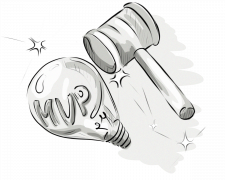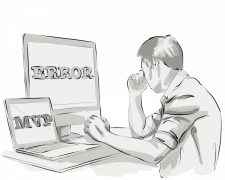Four months doesn’t seem like a long time, so it can be hard to imagine building a high-quality product that’s ready for initial users in such a short span. The truth is, it can be extremely hard to produce quality software that’s ready for an audience in four months, but if it’s planned and executed correctly, then it should be more than enough time.
The Pre-MVP Phase
Before starting the prototyping and development phase, you need to conduct the relevant pre-MVP phase activities, such as research and planning. The main phases include:
Customer research: Identifying your target audience is an important part of MVP and business success. Knowing who your customers are and understanding the problems they face, their needs, and their behavior will help you with creating the right user experience, including the most essential features, and connecting and interacting with them (e.g. on social media). Detailed customer research also allows you to create a list of assumptions that you will then validate with your MVP.
Market analysis: Conducting thorough market analysis will allow you to uncover new opportunities and identify risk. You’ll also be able to weigh up your competition and get a better understanding of the size of the market, allowing you to well plan your business’ entry and establish your position.
Fundraising plan: There are a number of ways to raise funds for your MVP’s development, but they all come with pros and cons and you need to fully understand the consequences, both negative and positive, before making your final decision.
Finding your technology partner: Having the right technical partner behind you greatly increases your chances of realizing early success and assists other areas of your business, such as raising investments. It’s important to understand that your technology partner is not just one person who can code and create a few graphics, but it is a full-service team of skilled professionals who can handle all areas of software development, from design to development and post-launch monitoring and support.
MVP in 4 Months
Once you’ve found the right full-service technology partner, the main parts of your MVP can begin.
Prototyping and MVP Planning
Before the programmers start coding away, your MVP needs to be planned and set up correctly to ensure the whole project runs as smoothly as possible. There are a number of planning activities that your technology partner will conduct and all of these will require direct input from you. By completing a needs-and-requirements analysis, planning your users’ journey, and defining the scope of your MVP, your technology partner is able to eliminate as much ambiguity and risk from your project as possible.
Another crucial part of the planning process is the prototyping phase. In order to build the back end (the programming side) of your MVP, the foundations need to be designed and laid out. Creating an interactive, high-fidelity prototype provides many early benefits:
- You’ll get clearer insights into the look and feel of your application.
- Initial customers will be able to use and test your application.
- Usability flaws can be identified and fixed.
- Your application will be set up for a smooth transition into development.
Approximate time frame: 1 month.
The time frame for the planning and prototyping phase is around one month. Of course, this is project-dependent and subject to the complexity of the project.
Developing Your MVP
Now for the most time- and resource-consuming part of your MVP’s lifecycle — the development phase. This stage involves the designers and developers working together to move your MVP from the design-and-prototyping phase into development. Having the high-fidelity prototype, which was created in the previous stage, allows the developers to hit the ground running, as your application’s structure is already set up and all the design elements are ready for implementation.
While the development side of your application is very much left up to the developers, there will still be a number of activities you will need to be actively involved in, such as finalizing your MVP’s features and providing feedback at the end of each sprint.
Communication and transparency are critical factors that can heavily affect the outcome of your MVP project, so it is important that your technology partner develops software according to the agile methodologies, as they encourage client input and strengthen the client-developer relationship.
Approximate time frame: 3 months.
The three-month time frame greatly depends on the number of team members assigned to the project and the complexity of your project.
Post-Launch Phase
The launch of your MVP triggers the start of another vital part of MVP success; the post-launch phase.
The post-launch phase consists of a number of important activities that need to be completed in order to maximize opportunities and continue your MVP’s success. They include:
- Gather and analyze all the feedback and data to make iterations and changes.
- Advertise and promote your application to attract more users.
- Maintain and support your application to ensure it is free from major bugs and performance issues.
- Continue the development of your application and start raising investments.







